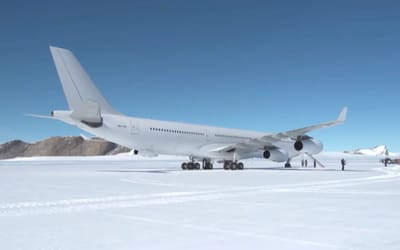Supersonic wingless ultra-luxury plane to complete London to New York flight in under 5 hours
- Sky OV is a wingless jet concept that could fly supersonic
- The wingless design makes it 50 percent more efficient than ‘traditional’ aircraft
- It would accommodate up to 200 passengers
Published on May 08, 2024 at 6:40 PM (UTC+4)
by Alessandro Renesis
Last updated on May 17, 2024 at 6:27 PM (UTC+4)
Edited by
Kate Bain
This is a supersonic plane concept that could potentially fly from New York to London in under five hours.
Simply dubbed Sky OV, it could be faster than the average airliner, and a lot more efficient.
The key to all of that is its unique wingless design.
READ MORE: First humans to reach Mars will travel on nuclear-powered spacecraft
Sky OV is a wingless jet concept designed by Oscar Viñals, the same person behind the nuclear-powered concept that could potentially fly from London to New York in 80 minutes.
It uses bladeless turbojet engines, which are more efficient than current turbojet engines, and faster.
The jet would use hydrogen fuel technology, meaning it would use electric units powered by hydrogen fuel cells, and the electric units would in turn propel the jets.
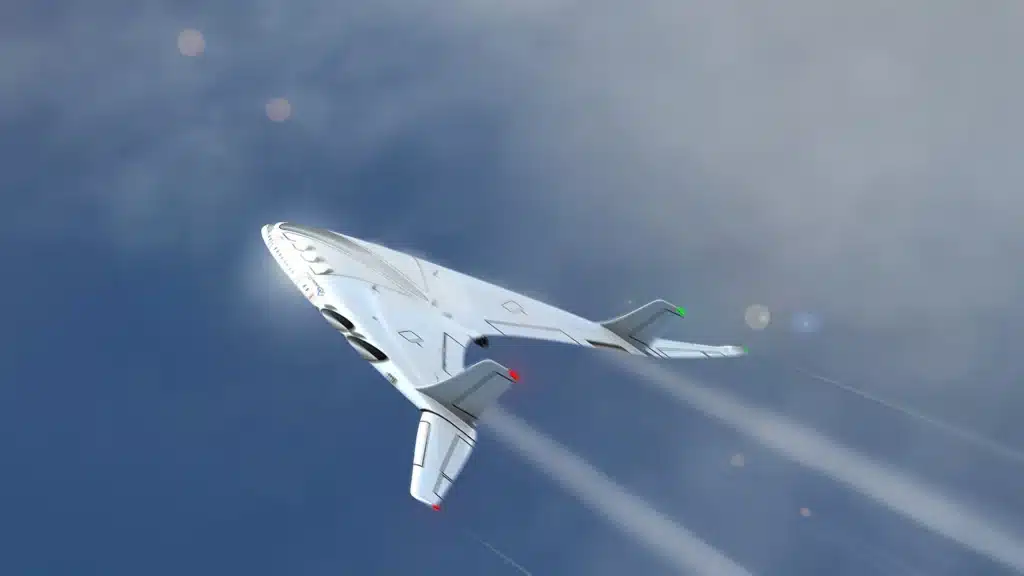
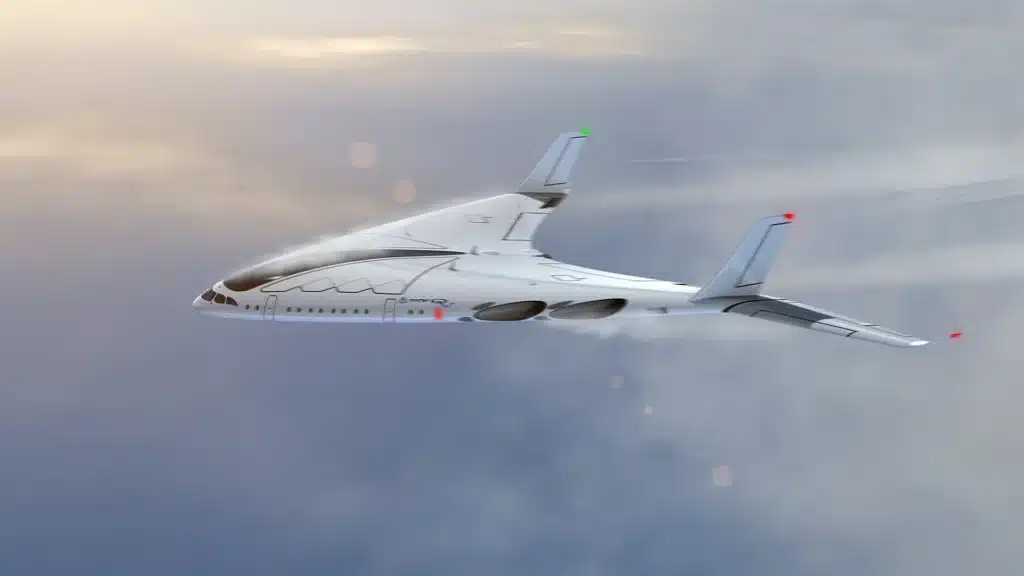
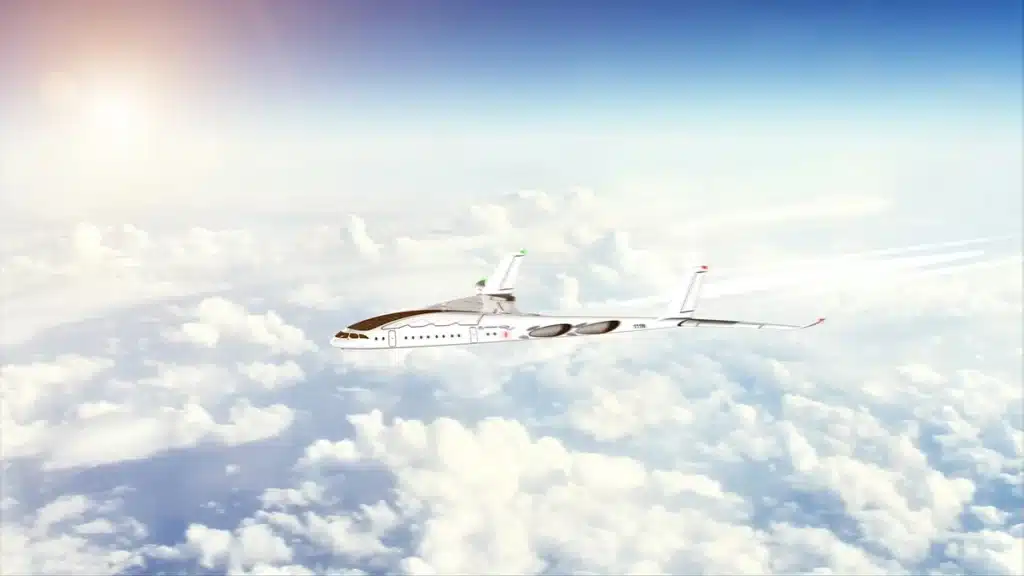
Even though most aircraft look the same, basically a fuselage with wings attached to it, different designs have always existed.
Lockheed Martin, for example, once unveiled a prototype for a jet with a circular wing.
The Sky OV uses a blended-wing design which, because of the unusual way the wings are ‘glued’ to the fuselage, makes it look like it has no wings at all.
The last section of the wings, the only part that’s not physically attached to the body, is very small and can fold parallel to the ailerons.
According to Viñals, this system would make the wingless jet 50 percent more fuel efficient than a ‘regular’ aircraft, also due to the fact it would make it 30 percent lighter.
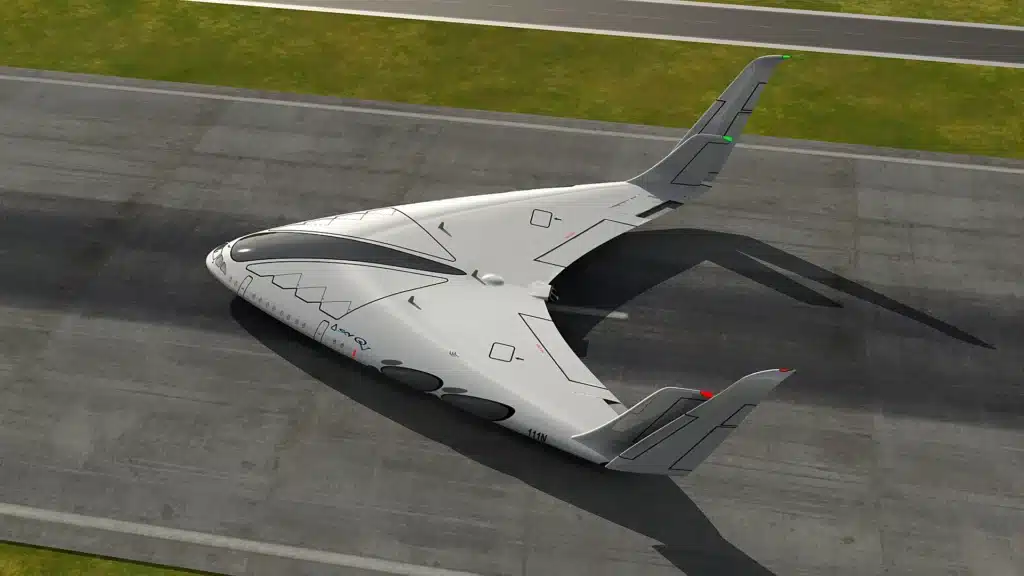
Sky OV would be 45.5 meters long, with a wingspan of 66.8 meters, and it would have a capacity for 200 passengers.
The cruise speed would be 1,235 km/h, or Mach 1, with a top speed of of 1,470 km/h (913 mph) – or Mach 1.2.
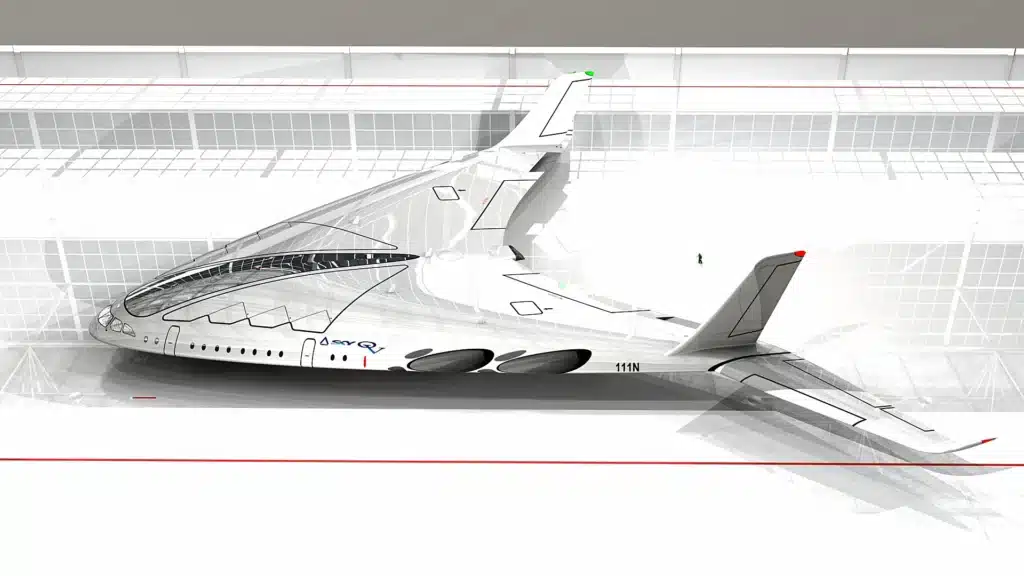
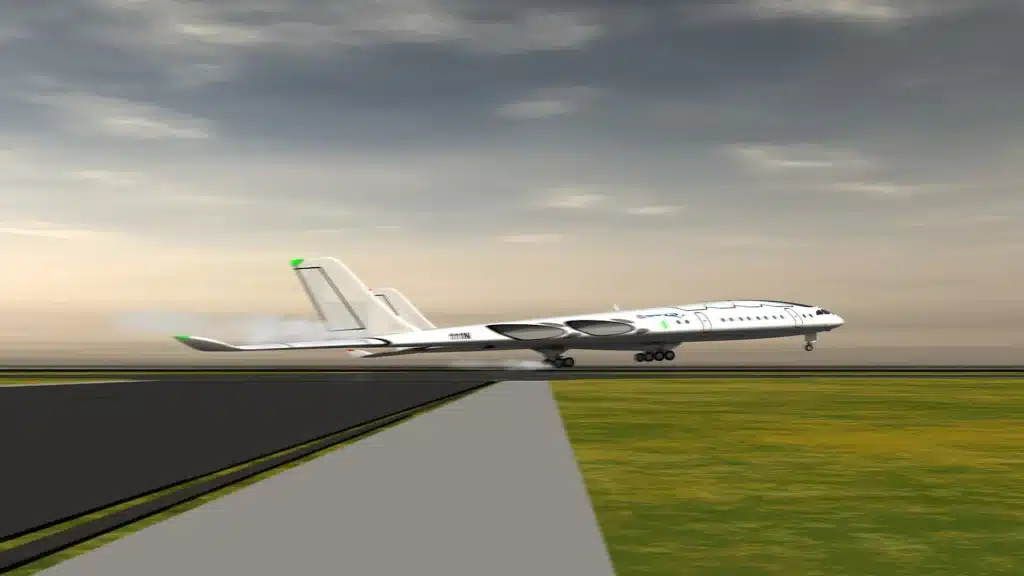
Unfortunately, this is just a concept, and it doesn’t look like the aviation industry is ready to shift away from the ‘traditional’ aircraft design we all know.
At least for now.
DISCOVER SBX CARS: The global premium car auction platform powered by Supercar Blondie
